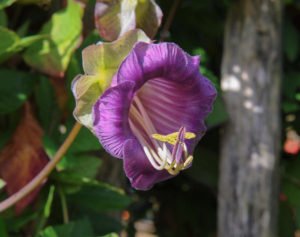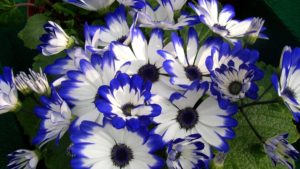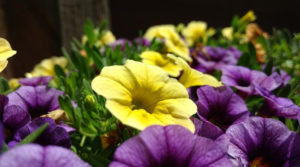
Ricinus communis is a perennial tree, in culture-an annual herbaceous plant of the family Euphorbiaceae, with erect, hollow, branched, green, purple or brown-red stems up to 1.8 m (2 yard) high.The leaves are glossy, large, on long petioles, deeply lobed, of various colors: dark green, reddish, blood-red, reddish-brown, with a purple tint. Flowers are small, color from white to pink-red or red; collected in racemes up to 70 cm (2.3 feet) long; bloom in August. The fruits are spiny boxes, brightly colored in various shades of green, red, and purple-red before ripening; they ripen in September. The seeds are poisonous! The birthplace of castor beans, I think, is North-East Africa.
Exotic in the castor is its large growth and large leaves that resemble a palm tree. They are located on long stems that are separated from the ground at a considerable distance and create a loose texture. Therefore, it is difficult to find harmonious neighbors among ornamental herbaceous crops. It is most expressive in solitary plantings or in small groups of 2-3 specimens, looks good against the background of a house, fence, lawn, gazebo; it can decorate outbuildings, compost heap and, although it forms a loose, visible surface, it is valued in everyday life as a reliable remedy for flies.
In the design of a country plot, the caster, in addition to the main green, creates or supports a dark, especially purple-red, purple palette. Its red-leaved varieties are perfectly combined with red-leaved amaranth. The distance between the plants when planting is 50-70 cm (1.6-2.3 feet). Prefers fertile soil.
Decorative varieties
- “Carmencita” (up to 200-300 cm (6.6-9.8 feet), well-branched, leaves dark bronze-red, female flowers light red)
- “Impala” (compact, 120 cm (3.9 feet) high, the leaves are reddish-purple, the young shoots and leaves are carmine-red, the male flowers are spectacular, yellowish-green);
- “Red Spire” (a height of 200-300 cm (6.6-9.8 feet), red stems, bronze leaves);
- “Zanzibarensis” (with a height of 200-300 cm (6.6-9.8 feet), the leaves are large, green, and the veins are white);
- “Kazatchka” (the leaves are dark green with red veins, the young ones are purple-tinged, the flowers are bright red);
- “Borboniensis Arboreus” (tall, red stem, gray-green leaves);
- “Coccineus” (leaves with a bronze tinge, cut deeper than in other varieties);
- “Gibsonii” (up to 120 cm (3.9 feet) tall, the stems are dark purple, the leaves are red-purple with a metallic sheen);
- “Gibsonii Mirabilis” (up to 120 cm (3.9 feet) tall, leaves and stems purplish-red);
- “Sanguineus” (the fastest growing, green leaves with a reddish tinge);
- “Cambodgensis” (the stems and leaves are dark purple)
The use of ricinus
Ricinus is not only an ornamental, but also a cultivated essential oil and medicinal plant. Of practical importance are the seeds from which castor oil is obtained, which is often used for medical purposes (the classic has a laxative effect, stimulates contractions during childbirth, is used in the treatment of burns and ulcers, eye diseases).




Leave a Reply